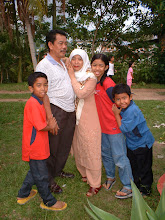
Kepong
FRIM or Forest Research Institute of Malaysia is a must for all nature lovers who are in the capital city of Kuala Lumpur. It is located in the suburb city of Petaling Jaya, approximately 16km north west of the capital city. It was founded in the year 1929 and is one of the leading institutions in tropical forestry research both locally and abroad. This 600 hectares tropical forest contains a wealth of flora and fauna with approximately 15,000 species of plants though for a layman in botanic, all of them look like greeneries.
As you enter FRIM, you will be amazed by the arboretums or living museum of trees. Walk through the many nature trails and discover the many species of flora and fauna here. Remember to go to the information counter for a briefing and purchase some brochures on the plants that you will encounter before you move out to explore the surrounding area.
FRIM or Forest Research Institute of Malaysia is a must for all nature lovers who are in the capital city of Kuala Lumpur. It is located in the suburb city of Petaling Jaya, approximately 16km north west of the capital city. It was founded in the year 1929 and is one of the leading institutions in tropical forestry research both locally and abroad. This 600 hectares tropical forest contains a wealth of flora and fauna with approximately 15,000 species of plants though for a layman in botanic, all of them look like greeneries.
As you enter FRIM, you will be amazed by the arboretums or living museum of trees. Walk through the many nature trails and discover the many species of flora and fauna here. Remember to go to the information counter for a briefing and purchase some brochures on the plants that you will encounter before you move out to explore the surrounding area.

Canopy Walkway
Of particular interest is the park's canopy walkway that you must not miss. This canopy is suspended 30m from the ground and spans over 200m. Be bold and walk through the hanging canopy and you will be able to see the breath-taking view of the city and the greeneries of the forest. Other activites that you can do include camping, family and team building activities, picnic near the waterfall and jogging.
Of particular interest is the park's canopy walkway that you must not miss. This canopy is suspended 30m from the ground and spans over 200m. Be bold and walk through the hanging canopy and you will be able to see the breath-taking view of the city and the greeneries of the forest. Other activites that you can do include camping, family and team building activities, picnic near the waterfall and jogging.
The "Crown Shyness" Phenomenon
Getting Here
FRIM is located along the Selayang-Kepong Highway. You can take the KTM Komuter train from the Kuala Lumpur Railway station or any KTM Komuter station that is in the vicinity and head for Kepong station. Once you reach Kepong station, alight from the train and take a taxi to FRIM.
FRIM is located along the Selayang-Kepong Highway. You can take the KTM Komuter train from the Kuala Lumpur Railway station or any KTM Komuter station that is in the vicinity and head for Kepong station. Once you reach Kepong station, alight from the train and take a taxi to FRIM.













